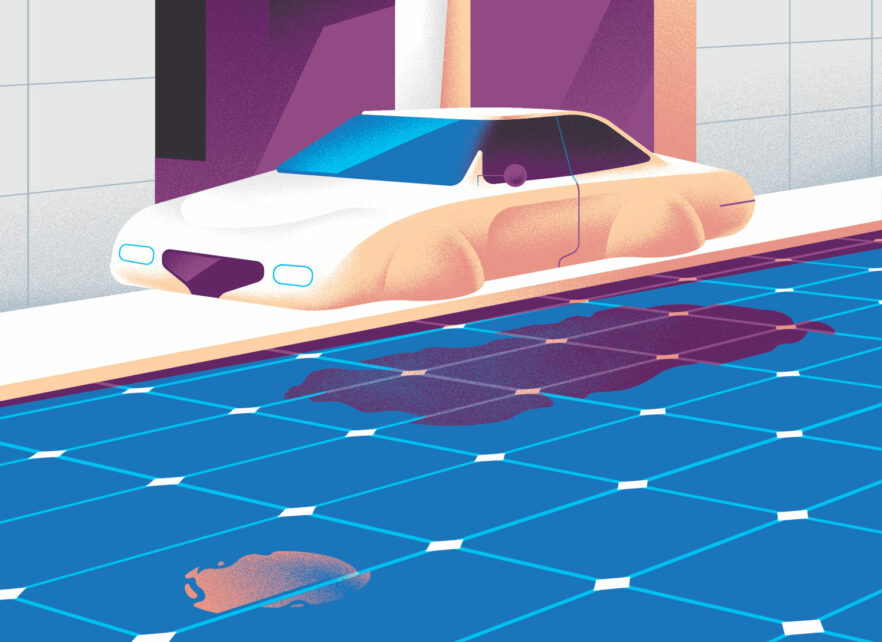
A sunny new world
The future energy landscape is still largely terra incognita, but with the growing demand for energy satisfied by a rapidly expanding renewable energy sector, it promises to be truly different from today.
Even as the global appetite for power continues to increase, solar and wind are set to become two important power sources over the next few decades. Between 2000 and 2015 global energy demand grew by 2 percent per year, and while the pace will slow to 0.7 percent per year through to 2050, a lot more energy will be needed, according to the report Energy 2050: Insights from the Ground up by global consulting firm McKinsey.
A new industrial revolution awaits.
Isabelle Kocher
CEO
Energy efficiency will make great strides in the coming years, the report says, but as the global population continues to grow – albeit at a slower pace than before – and standards of living increase worldwide, demand for electricity will continue to grow. According to a recent report from Bloomberg New Energy Finance, electricity demand worldwide is expected to grow 58 percent by 2040, which will be met by a doubling of installed capacity to 14 TW by 2040.
Another important factor for power demand is the ongoing electrification of transport. The investment bank Goldman Sachs predicts that between now and 2025 more than 20 million electric cars will be sold globally and that traditional combustion engine cars will reach their peak in 2020 and then start to decline.
But the future will be less energy intensive than today. McKinsey predicts that by 2050 the amount of energy needed to produce one unit of GDP will be half what it was in 2013. One will get more for less. One explanation is that services are taking a larger slice of the global economy, and they are typically less energy demanding than manufactured goods. A haircut requires a lot less energy than producing a new suitcase, for example, even though the price and hence the value may roughly be the same. In India, the services share of the economy is expected to climb to 64 percent in 2035, up from 54 percent today.
New technologies and a digitized and automated economy boost energy efficiency and moderate demand even as populations and economies grow. In 2017, LED lighting for the first time overtook traditional incandescent and fluorescent lighting in sales. Goldman Sachs believes that by 2050 the electricity used in the United States for lighting will be cut by 62 percent through the expanded use of LEDs.
Digitalization speeds up the growth of services and turns tangible goods such as CDs and books into digital services. It makes the whole economy more efficient, and through technologies such as big data, smart metering, autonomous cars and decentralized power grids, it is a major force in energy efficiency.
One peculiar exception is the proliferation of networked devices, including smart phones and tablets, but also vehicles, cameras, sensors and household devices. They are projected to swell to at least 50 billion by 2020, and together they would consume 1,140 TWh per year or the equivalent of the electricity use of Canada and Germany combined. Most of this would even be used when the devices are in standby mode and not performing any function. Luckily, an analysis by the International Energy Agency shows that implementing best-available technologies can cut this demand by more than 60 percent.
Energy is used more wisely and more efficiently, but more is still needed. So where will that extra power come from? You just have to step outside to have the answer – sun and wind.
Just a decade ago the renewable industry was sluggish, expensive and mainly German. Today it is nimble, low-cost and mostly Chinese. Efforts to curb climate change and smog have driven costs down dramatically, which today means that solar and wind are competitive with fossil fuels in many markets, even without subsidies.
Solar modules are 90 percent cheaper than in 1990, and solar electricity has become 72 percent cheaper since 2009 and is expected to drop an additional 67 percent by 2040. This has spurred the construction of wind and solar parks at unprecedented rates. Electric cars are also getting cheaper and sales are on the rise, driving down the price of batteries, which hold an important key to unleashing new levels of green growth.
Bloomberg New Energy Finance predicts that around 6 trillion US dollars will be invested in wind and solar power between now and 2040, reshaping the world’s electricity markets.
Around one-third of new capacity is also expected to be in the form of small-scale installations such as on the roofs of private dwellings, and this demands greater system flexibility, including batteries and flexible power demand response.
So it’s a brave, sunny and windy new world that awaits, or as Isabelle Kocher, chief executive of the French power and gas group Engie, calls it, “a new industrial revolution”. It is one that will allow the world to meet its growing power needs more sustainably, creating a cleaner, healthier and brighter future.





